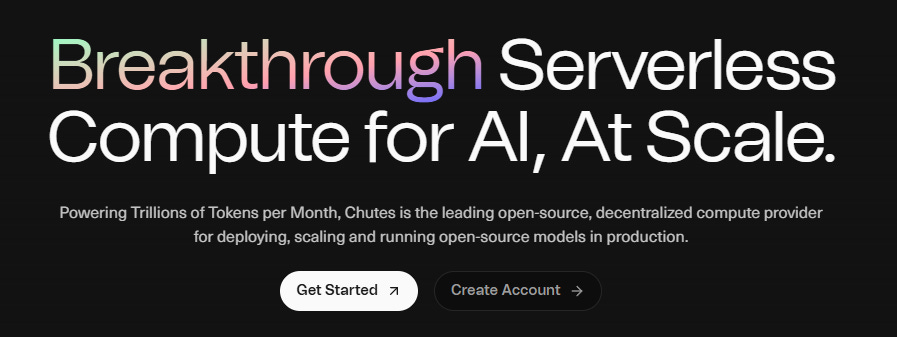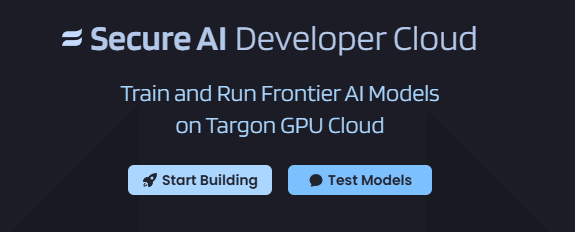Why Bittensor’s Top Subnets Still Can’t Explain Themselves
Subnets for the Rest of Us: A Toddler-Proof UX Audit
My 4-year-old is obsessed with Toy Story.
His younger brother is not far behind.
Sheriff Woody and Buzz Lightyear are household names in, well, our house.
He knows everything about them and spends his days somersaulting off our couch screaming to infinity and beyond!
But still, I get the constant questions that you would expect from a toddler. Why did he do that dada, what happened to Buzz there, where is Woody's hat gone?
Just as his love for Toy Story doesn't magically explain why Woody's hat disappears or Buzz can't really fly, Bittensor's brilliance is buried under layers of complexity.
Even if you’re obsessed with decentralized AI, the UX feels like trying to explain Woody’s existential crisis to a toddler: you’re excited, but the tools to teach them are either missing or assume they already speak AI fluently.
Bittensor's core users are miners with GPUs, validators with PhDs, subnet owners with crypto capital and are fluent in its language, but the network’s "front door" is locked unless you speak Python, Git, and blockchain incentives.
The challenge isn’t the tech; it’s making the system as intuitive as a child’s favorite movie.
If I can break down Toy Story’s plot into bite-sized lessons for my toddler, can subnets do the same for their value proposition?
To that end, I'm going to try and evaluate the landing pages of three top Bittensor subnets based on some important metrics to a non-technical user: clarity, visuals, onboarding, community/support and first time user path.
Chutes
Chutes allows users to run any open-source model with just a few lines of code, making it beginner-friendly. The home page scales this well, however there are still terms that may be meaningless to newcomers (what's a SOTA? - attention spans may not extend to Googling this).
It is very slick and visually appealing and you can tell they have recently hired a marketing team to help with this.
Chutes recently rebuilt their landing pages from scratch with more pages targeted towards enterprise customers; and new pricing tiers coming in the next few days as I publish this update, making it more accessible to less technical users. I look forward to testing their models in the near future.
Primary CTAs (“Get Started”, “Create Account”) promise simplicity and onboarding is very quick without the need to navigate to documentation for deployment steps.
Chutes’ clean visuals and quick start CTAs are leaps ahead of subnets that bury users in technical debt. Great job, Chutes!
Targon
Targon is a secure GPU-powered AI cloud that lets you train, test, and run advanced AI models on demand.
The main section highlights dashboards and model stats but doesn’t immediately explain the core value in plain English.
Terms like “permissionless network” and “Nvidia Confidential Computing” add credibility but may overwhelm non-AI experts.
There’s no embedded quickstart or “Getting Started” walkthrough on the homepage-just navigation to dashboards and listing the models available.
There are “Start Building” and “Test Models” buttons, but no structured onboarding journey for beginners.
The main issue I see here is the visuals lean heavily on dashboards and model stats, which feel more like validator playgrounds than tools for mortals.
The site lacks a simple diagram of how data flows from your laptop to their decentralized cloud. We only see the model specifications. I think Targon needs to show more how their “AI inference” is a seamless process.
There is no visible community or help links on landing page; and while I had account setup issues that may be through my own error, it appears that support access is hidden in deeper layers.
Gradients
Gradients lets anyone train state-of-the-art image and text AI models with a few clicks or API calls.
Again, the jargon on the landing page like SOTA and column mapping may trip up absolute beginners without inline explanations, nor an explanation of what Bittensor is if one is not already familiar.
What I like is where it clearly directs users to begin training via model and dataset selection. It even includes curl examples and image samples of models made by the community.
There is no direct mention of community or support channels; but opening up the dashboard reveals a robust setup for community interaction with ongoing competitions and links to the latest research and papers.
It does feel like a playground for advanced users and if I’m just here to clean data or audit models there’s no “Beginner’s Corner” section.
It is slightly more welcoming with its “Start Building” approach; but does assumes basic familiarity with model training workflows.
Common Themes
With the caveat that Bittensor subnets are generally targeting a more knowledgeable audience, a recurring theme across even the larger subnets covered here is that their brilliance is overshadowed by a lack of beginner-friendly framing.
All three subnets assume users already speak the language of validators, miners, and machine learning, without explaining the basics. They fail to answer the toddler-level question: “What does this do, and why should I care?”
My Suggestions
Add a “What can I do here?” section on landing pages. Something like a story time version of their tech that distils it down to plain language, e.g. Targon translates text for pennies, or Chutes runs any model you need with no PhD required.
Provide user-friendly guides upfront. Replace GitHub-heavy docs with some easily accessible tutorials.
Surface community links upfront. How will newcomers find Discord help? Add a “Need Help?” button on every homepage along with the link.
Without picking on the larger subnets too much, these can feel like handing my kid a Toy Story coloring book and saying, “enjoy!” without the movie to explain the story.
They could make everything a lot more accessible by letting less technical users understand the process so they can use the end product.
Bittensor’s subnets are building a revolution, but they’re still waiting for a story so simple even a toddler could follow it.
The tech works, but the front door is locked unless you speak fluent AI and Data Science. My goal is to keep banging on that door until subnets realize their future depends on people like me: messy, Python-curious, and willing to trade TAO for real-world results.
If you’ve tried these subnets and felt lost, hit reply with your “WTF?” moment. I’d be very interested to hear your experiences.
Until next week.
Cheers,
Brian




